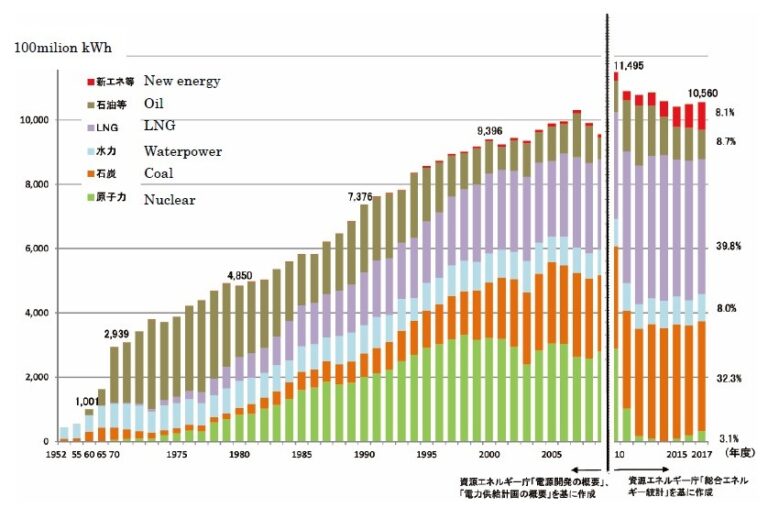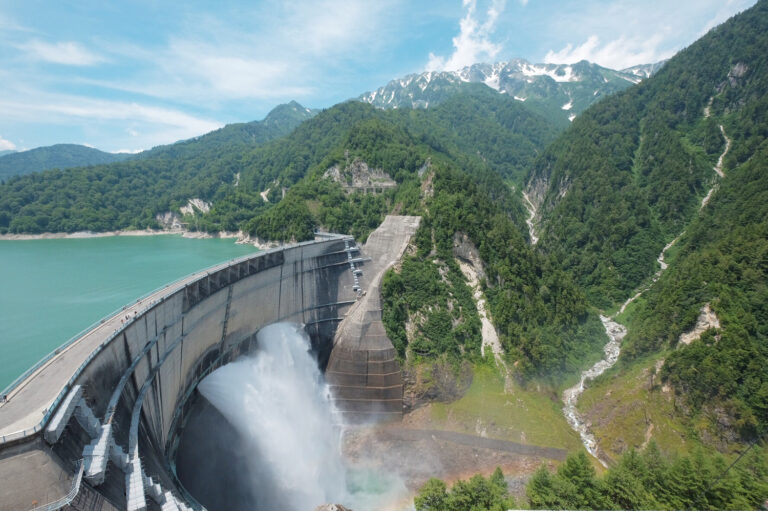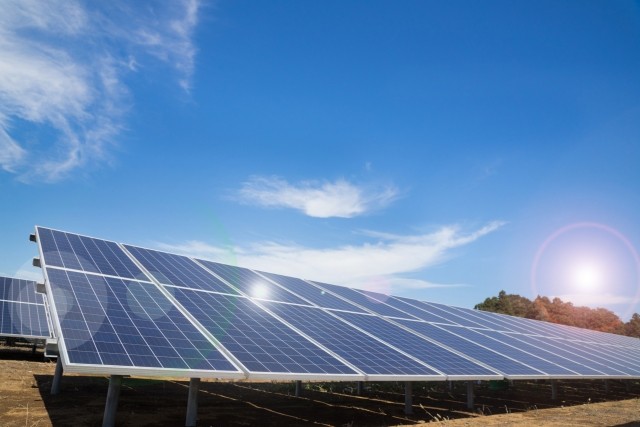In the developed world, one of the most urgent issues that we are currently dealing with is energy generation. How will we generate enough energy for our ever-increasing need for electricity and other forms of energy? Preferably without running out of resources and while saving our environment. Japan is no different, and one of today’s biggest headaches for the government is how to supply Japan’s need for power without relying too much on polluting coal plants and potentially dangerous nuclear plants. So what is Japan’s current situation when it comes to energy generation? And what is cooking for the (near) future?

Types of Energy Used in Japan
If you check the graph above, you will see the total energy usage and the types of energy sources that were used in Japan throughout the years. The one thing that stands out the most is the fact that the need for energy in Japan has increased steadily over the last 50 years. In fact, it has increased tenfold since the 1960s. Early on, clean and renewable water power was Japan’s main way of generating energy.
Unfortunately, it didn’t stay this way as it was impossible to keep up with the population’s ever-growing need for power. In the 1970s/1980s, Japan was booming economically and the need for energy multiplied several times. During this period, oil and nuclear energy became Japan’s most important energy sources.
In the decades that followed, gas and nuclear energy became Japan’s most used sources. And in the 2000s the pattern didn’t change too significantly. Then in 2011, the triple disaster happened, and you can see an immediate drop in the usage of nuclear energy. As almost all nuclear plants were shut down when Fukushima’s plant had its meltdown. At this moment, energy usage has been quite steady for the last 10 years and has even declined a bit since the top year 2010. One explanation is that the population of Japan has been shrinking since then, hence the lower need for energy. The usage of energy-efficient appliances has also helped.
Now, the traditional resources of gas and coal are Japan’s major energy generators. The usage of new energy sources is increasing only marginally. Let’s look into the different sources of energy in Japan a little more closely.
Energy Generation by Water Power

Japan’s main resource was water power until the 1960s. The country is rich in mountains and water, making this one of the easiest renewable energy sources to use. Most areas in Japan have about 2 meters of water, and 70 percent of Japanese land is mountainous. It means there are a lot of steep rivers which give the opportunity to build waterpower-generating dams.
The tallest dam in Japan is Kurobe Dam. You can visit this famous sight on a well-known sightseeing route, the Tateyama-Kurobe Alpine Route. It is not the biggest dam lake, but the 186-meter height makes this the highest dam in Japan.
Oil
From 1970 to the early 1980s the oil thermal power plant was a common way to generate energy. We produce almost no crude oil in Japan except for a small amount in Akita, Niigata, and Hokkaido. More than 99% of the oil in Japan is imported. We import from Saudi Arabia, UAE, Qatar, Kuwait, Russia, and Iran in decreasing order. Japan has experienced two Oil Shocks, in 1973 and 1979. It was after that when we started to develop other kinds of electric plants in order to become less dependent on other countries for our energy needs.
LNG
LNG, or liquid natural gas, was one of the alternative energy sources for oil. The price is more stable than the oil price and it is also cleaner, which means it emits fewer air pollutants than oil. We started to import from Alaska in 1969. But their prices slowly crept up, so now we import from Australia, Qatar, and Malaysia in decreasing order. The percentage of LNG usage in resources for power plants is the highest now at about 40% in 2017.
Coal
Coal was the second most-used resource for power plants in the 1950s before using oil. This is one of the few natural resources that Japan has. There used to be more than 1,000 coal mines in Japan that produced 56 million tons of coal in the 1940s. Now, only one coal mine is still in operation in Hokkaido. The reason for the closure of most of the coal mines is that it is much cheaper to import coal nowadays.
We import coal from Australia, Indonesia, and Russia in decreasing order. It is cheaper than oil and LNG, so now, 32% of the resource for power plants is coal. The problem is that using coal emits more carbon dioxide into the atmosphere than other resources. Carbon dioxide is one of the major causes of the greenhouse effect which leads to global warming.
Nuclear Energy Generation in Japan

After WW2, the United Nations banned Japan from studying nuclear science but they resumed in 1953 after US president Eisenhower made a speech about Atoms for Peace. The first nuclear power plant was constructed in 1963 and continued experimentation before starting commercial use in 1966. Usage has increased year by year. The number of nuclear plants was 59, and more than 25% of the electricity in Japan was generated here in 2010. It was hailed as clean energy.
But the situation changed suddenly in 2011. One of the biggest earthquakes in history hit the ocean east of Japan, and a huge tsunami was triggered that hit the coastline of eastern Japan. A 14-meter high tsunami hit the nuclear plant in Fukushima. There were 6 plant buildings, of which 3 were in operation and the other 3 were stopped for an examination.
The tsunami swept over the plant’s seawall and then flooded the lower parts of the reactors. This stopped the emergency generators which were used for water circulation to cool down the reactors, and that subsequently led to three nuclear meltdowns and three hydrogen explosions. Residents within a 20km radius from the plant needed to evacuate.
The Aftermath of the Accident
After the accident, most nuclear plants in Japan stopped operating in order to be examined, leading to electricity generation coming from nuclear plants became zero in 2014. After careful examination, 9 nuclear plants are working again in 2020. But most of the plants in Japan are still suspended because of the opposition of residents around the plants.
Because of the sudden reduction of electricity by stopping nuclear plants, Japan needed to increase the energy generated by other resources. It was mainly LNG and coal usage that was increased, which are relatively cheap compared to oil. The government will try to reduce the number of nuclear plants in the future but still regards it as an energy source that can be considered.
Renewable Energy Sources in Japan

Because both LNG and coal emit carbon dioxide, it is not good for the environment. Interest in renewable energy sources has increased recently for this reason, but until now, it has not been working very well. The percentage of new energy (renewable energy) is still only 8% in 2017. If you include water power plants as renewable energy as well, the percentage becomes 16% which is still too low.
After water power, solar power is Japan’s most used renewable energy source. The government promoted building new solar power plants more than 10 years ago by setting a high buying rate, so a lot of companies have invested in building solar plants.
The third most used renewable energy source in Japan is biomass, followed by wind power. The problem with solar and wind power is that they can’t provide a stable supply because they depend on weather circumstances.
Because there are a lot of volcanoes in Japan and the earth’s crust is thinner than average in some places, we are working on harnessing geothermal energy as well. We may have big possibilities to use this form of renewable energy, but at the same time, there are some issues that need solving first, such as the high cost of setting it up, and the chance that it may damage nature.
As it is still a work in progress, the Japanese government tries to increase the percentage of renewable energy to 22-24% in 2030.
Your Japan Tour
As seasoned Japan experts, we can help you create your perfect Japan tour including guides who can tell you all about the current situation of energy generation in Japan. Contact us to start planning your unforgettable holiday to this fascinating country. Japan is full of once-in-a-lifetime experiences, culture, history, nature, and delicious food!